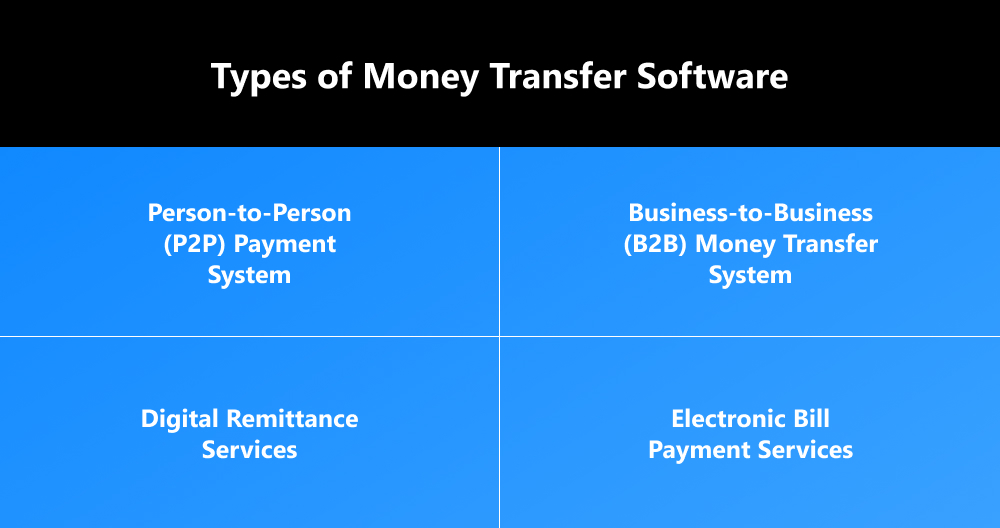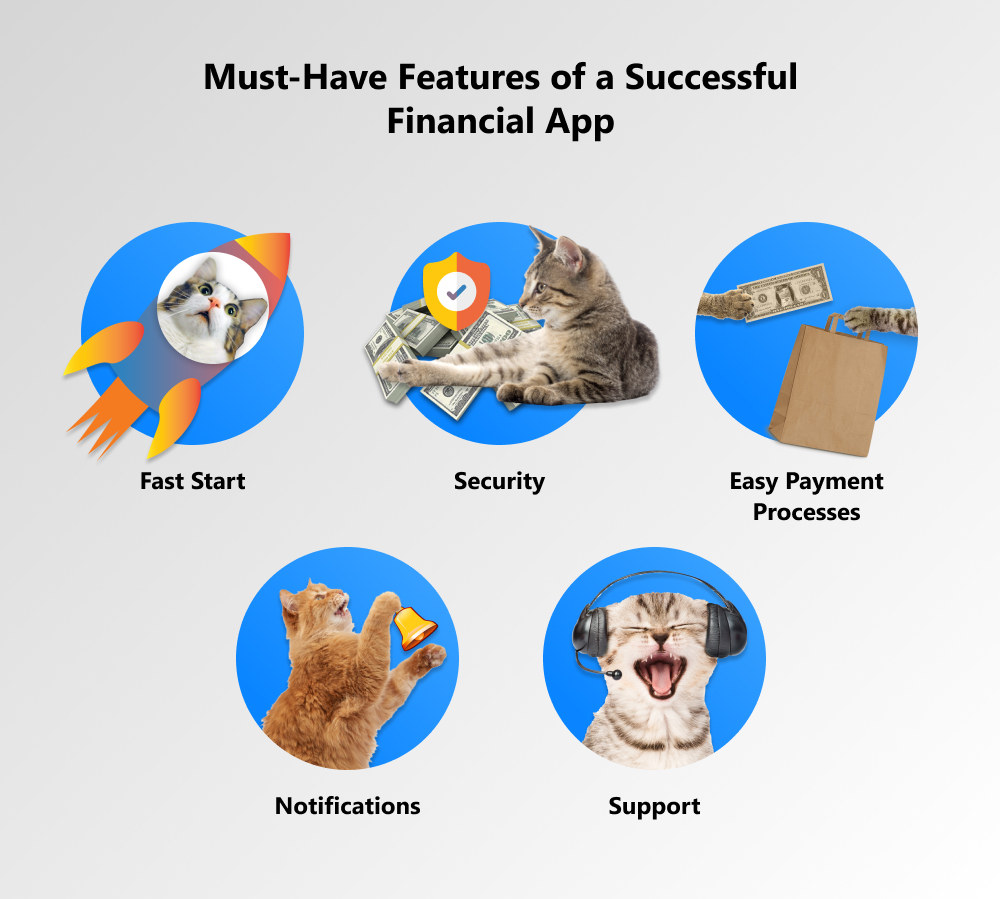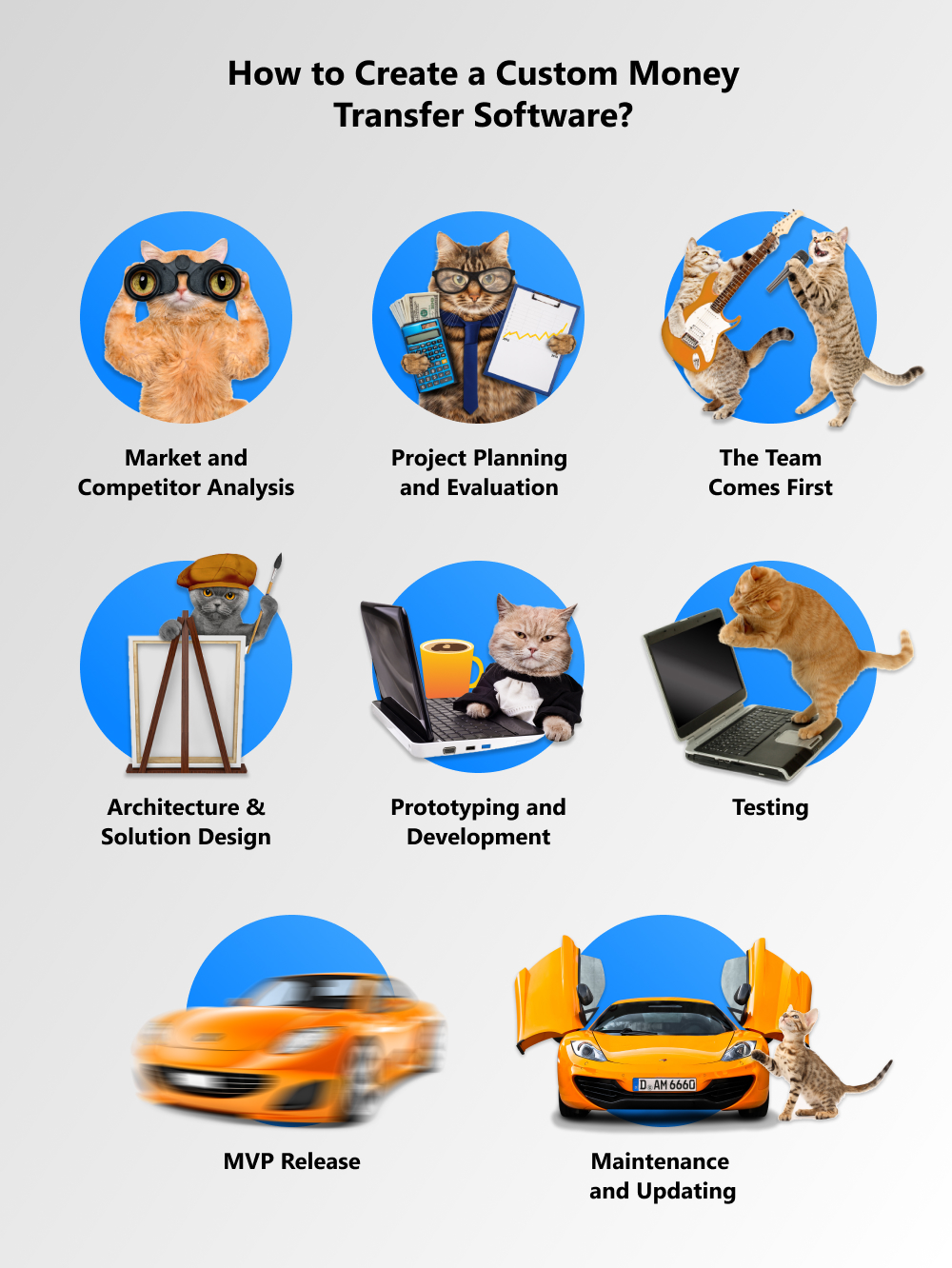Modern technologies allow people to make financial transactions without leaving their homes. According to the statistics, 58% of people in the United States prefer to use non-cash payment methods and transfer money to their friends and families through applications on their smartphones. The global remittance and money transfer software market size stood at $16.28 billion in 2020 and is expected to grow by 13.3% by 2028. Therefore, customer demand for appropriate fintech tools will increase, giving development companies an opportunity to jump on this fast-moving train and bring their solution to the market.
written by:
Alexey Krutikov
PMP, Project Manager,
Qulix Systems
Modern technologies allow people to make financial transactions without leaving their homes. According to the statistics, 58% of people in the United States prefer to use non-cash payment methods and transfer money to their friends and families through applications on their smartphones. The global remittance and money transfer software market size stood at $16.28 billion in 2020 and is expected to grow by 13.3% by 2028. Therefore, customer demand for appropriate fintech tools will increase, giving development companies an opportunity to jump on this fast-moving train and bring their solution to the market.
Contents
Why Do People Choose Cashless Payments?
The modern world is witnessing a change in customer behavior and a tendency to move to non-cash payments for goods and services. It's not surprising because digital transactions allow buyers to make purchases, pay for services, and transfer money in a more convenient, reliable, and faster way. Cashless operations benefit everyone: they offer convenience for buyers, efficiency for vendors, and the ability to reduce corruption and the shadow economy for the government.
This trend will inevitably develop. More and more customers prefer to leave their wallets at home and carry out everyday payments only using a smartphone or smartwatch. Moreover, the COVID-19 pandemic significantly accelerated the adoption of online transactions and usage of remittance and money transfer software. The GSMA report indicates that the volume of international transactions rose by 65% in 2020 during the pandemic. Let's see what fintech solutions are now available to customers.
Which Types of Money Transfer Software Do People Use?
Person-to-Person (P2P) Payment System
P2P payments are fast, simple, and secure online transfers from one individual's card to another individual's card. To transfer money to each other, people use applications installed on their smartphones, tablets, or computers. To complete a transaction, it's enough to indicate the minimum amount of information, such as the card number or the name of the recipient. P2P payments are very popular because:
- they save time as you don't need to go to the bank to transfer money to your relatives or friends;
- they are 24/7 available, allowing customers to open the P2P app at any time and make a transaction;
- unlike banking systems, they provide instant payments. As a rule, your funds reach the recipient in a couple of minutes.
Business-to-Business (B2B) Money Transfer System
B2B payments are transactions made between companies. When a business entity wants to transfer money to the account of another business, it needs to perform a range of actions: get the recipient's details, issue an invoice, wait for money for several days, and so on. B2B solutions allow companies to transfer money without any hassle and at a minimal cost. For example, when making international payments, banking systems charge €30 SWIFT fee, while B2B Pay app offers clients to avoid it.
Digital Remittance Services
Remittance software is usually used by migrants and guest workers from undeveloped countries who have to work in wealthy countries like the United Kingdom, the United States, Japan, and others, and send money to their families and relatives. Money transfer software is a cheaper and often more convenient alternative to international bank transfers. These apps offer lower rates, faster transfer speeds, lower exchange rates, and don't require a bank account. Moreover, remittance solutions allow customers to track the transfer and provide reports on transactions. Money transfer apps make sending funds easy, convenient, and always available. In addition, they have multiple levels of security and are rapidly becoming a popular option for making fast and efficient transfers on the go.
Electronic Bill Payment Services
Electronic Bill Payment Services allow a customer to pay for goods and services or make payments from a single account. They provide access to set-it-and-forget-it automation, juggling paper bills, same-day payments, and much more. You can set up a payment schedule and sleep well because the service will complete all the transactions on time.
Have you decided what type of money transfer system you want to create? So, you should clearly understand what features your software will offer to the clients to be compatible.
What Must-Have Features Should a Successful Financial App Have?
We've made a list of 5 key features that should be considered when developing fintech applications.
Fast Start
A registration form is the first thing a customer sees when he or she downloads and opens your money transfer or remittance software. That's why it should be as short as possible, easy-to-understand, and predictive. For example, 54% of customers are ready to leave the website if they need to fill in the registration form. Don't make your customers fill in millions of fields.
Security
When it comes to money, every person needs to be sure that his/her personal information and payment details are safe. That's why the first step is to think about the security of entering the payment system. Money transfer and remittance software usually use a 4- or 6-digit PIN and biometric technology like TouchID or FaceID. Secondly, the EU Revised Directive on Payment Services (PSD2) requires developers to add a two-factor authentication feature to their money transfer solutions to increase the security of online payments.
Easy Payment Processes
Your customers will appreciate a simplified money transfer process and a well-thought-out UI/UX design. They would like to see at once which buttons to click to complete a transaction or view payment details. Improve usability of your solution by adding the features, such as autocomplete, quick access to contacts, etc.
Notifications
In addition to standard push notifications, you can include in-app messages. This feature helps the software inform people about their current balance and completed translations. Let a user choose how they want to receive data: via push notifications, in-app messages, SMS, or emails.
Support
To make your financial application convenient and easy to use, provide seamless access to customer support. Your remittance and money transfer software will manage the finances of users, and they will definitely have a lot of questions about how everything works and where their money goes. Nobody wants to send an email and wait for hours for a response. So, the support service should have an in-app chat, be 24/7 available, and quickly answer frequently asked questions.
OK, you've learned about the main features your platform should have. Now, it's time to find out what steps to take to create it.
How to Create a Money Transfer App?
The development process should consist of the following stages:
Market and Competitor Analysis
Before you start building your solution, do thorough market research to get an idea of your target audience and competitors. You need to get as much information about potential customers as possible. See what your competitors are offering and read reviews from their customers. You must clearly understand what people expect from the financial solutions, what they don't like, what they want to improve, and what to remove. Check out the latest trends to innovate your solution. You probably won't want to invest thousands of dollars in an outdated concept.
Project Planning and Evaluation
At this stage, you need to answer 2 main questions:
- How much does it cost to build a remittance and money transfer platform?
For this purpose, it will be necessary to draw up a statement of work, plan a budget, and make a list of a team, which should include developers, testers, designers, marketers, lawyers, and specialists in the field of finance.
- How long will it take to release a minimum viable product (MVP)?
Developing money transfer software from scratch can take months to years when nobody will need your solution. Releasing an MVP will allow you to speed up the time to market. In this regard, you need to choose a software development approach depending on your business objectives: Agile (Scrum, Kanban, eXtreme Programming, DSDM, and others) or more conservative ones (Waterfall Model, V-Model, Spiral Model, and others). By the way, 71% of companies prefer Agile approaches because they allow them to launch their products much faster.
The Team Comes First
Your next step is to assemble a team that will work on your project. For this purpose, you should determine what kind of specialists you need, what tools they will use, what experience and knowledge they must have, and so on. The project team usually consists of a project manager, business analyst, developers (frontend and backend), UX/UI designers, testers, and marketing specialists. The right team is the key to the success of any business.
Architecture & Solution Design
Security is critical to the success of your money transfer software. Therefore, it must have all necessary technical safeguards to protect customers’ funds and personal data. Moreover, you should not forget about the security issues after the completion of your project. Cybercriminals think out new fraudulent schemes, and you must immediately respond to them.
At the same time, remember about a user-centered design. Users will appreciate the ease of use, hassle-free operation, engaging and simple navigation, clear messages in legible fonts, informative text, pleasing visual effects, easy access to data, clear calls to action, and so on. A good platform or system should have a nice appearance, as well as be convenient and useful.
Prototyping and Development
Then your team will build a prototype. This is a very important stage as it makes it possible to visualize the future application and see how it will operate. The prototype allows you to work out the features before starting the development process. If everything is OK, the developers start working on the platform. They use approved programming languages, frameworks, and other technologies to create a solution according to the terms of reference and schedule.
Testing
Testing is another essential stage that comes after development. Testers will check the following things in the first instance:
- Usability. When a user opens your software for the first time, the user expects to understand at once how to register, make payments, transfer money, and so on.
- Security. The connection with the user and payment gateways must be encrypted, personal data should be secured, and payment gateways should be unavailable to third parties.
- Performance. Testers carefully check the loading speed, reliability, size, robustness, and other parameters.
MVP Release
Releasing MVP will allow you to reduce development risks, test hypotheses related to your project, study its relevance, as well as get feedback from users and see what you need to improve to make your money transfer software more convenient and user-friendly.
Maintenance and Updating
Your journey won't end after the release stage. Despite the precaution measures, testing, and debugging, users will inevitably find some bugs and errors that need to be eliminated in a timely manner. This is the task of your support team. Besides, users' demands and preferences change rapidly, and you must keep your finger on the pulse to be able to quickly respond to some changes and update your product as soon as possible.
Final Word
As we can see, money transfer and online payment services are in demand among the population who need a secure, effective, and convenient instrument to send money and make transactions. At the same time, the creation of such a solution requires careful preparation, experience, knowledge, availability of specialists, and so on. The right professionals or partners are capable of doing marvels and bring your idea, even a crazy one! into reality. How to successfully launch your app and make progress? Find a team that is not afraid of any challenges and ready to solve any complex tasks.
Planning to build a money transfer software and have no idea where to start? Our specialists can give you professional advice and share the latest insights in this field. If you have any questions, please visit our website or get in touch with our support team.

Contacts
Feel free to get in touch with us! Use this contact form for an ASAP response.
Call us at +44 151 528 8015
E-mail us at request@qulix.com









